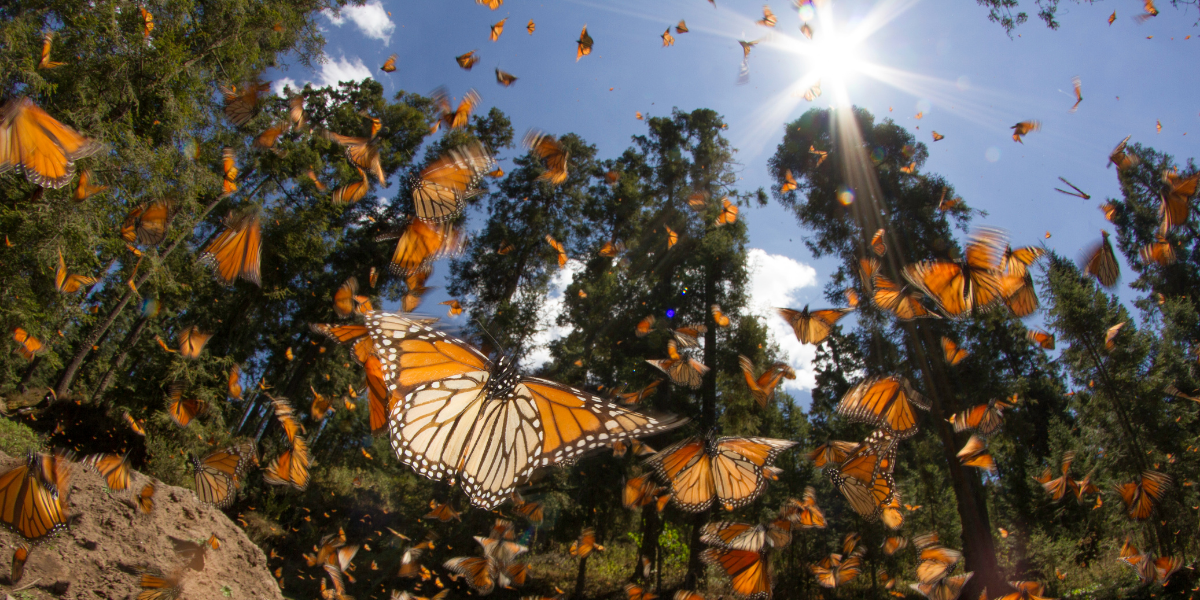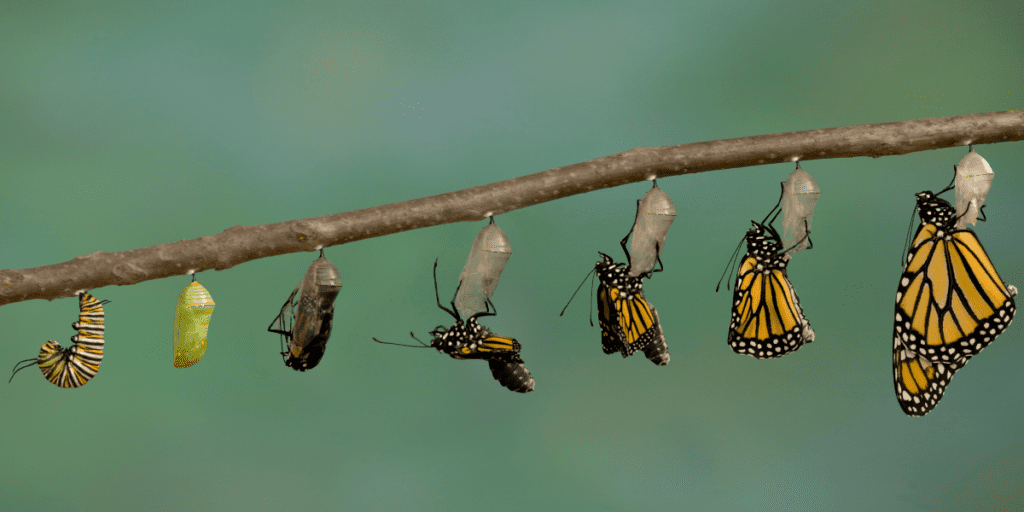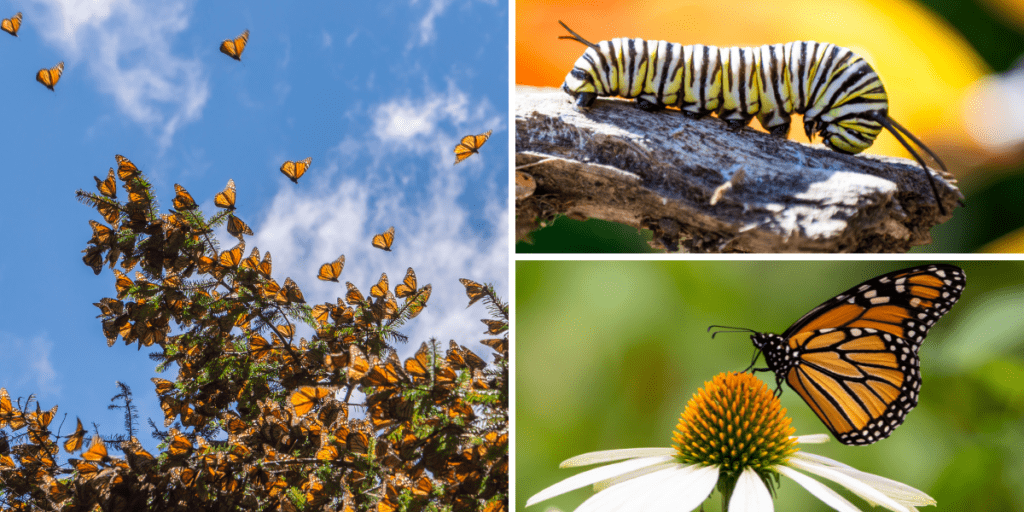Wildlife Species Spotlight: Monarch

This blog series focuses on species that underscore North Carolina Wildlife Federation’s commitment to habitat protection, restoration and connectivity, supporting wildlife species in need, and championing public trust resources based on science-based and nonpartisan decision making.
 Monarch Danaus plexippus
Monarch Danaus plexippus
With their striking orange, black and white patterned wings fluttering across Carolina blue skies, monarch butterflies put on quite the magical show. And North Carolinians are lucky to have a front-row seat to this kaleidoscope of natural beauty as the iconic species emerge. May 7 is National Start Seeing Monarchs Day, the time of year we can witness millions of butterflies swarming, roosting and feeding across the state.
Every spring, Bird House on the Greenway hosts a Milkweed for Monarch Butterflies fundraiser for The Butterfly Highway program. They have three varieties – tuberosa, swamp and common – available for purchase at the store, first come-first served. Bird House also carries native aster (white and purple) and purple coneflower, which will feed adult monarchs as well as other pollinators and seed-eating birds.
As with many species, we could have chosen from any of North Carolina’s 75 butterflies, more than 500 bees or over 4,000 moth species to highlight our pollinator priorities. We choose the monarch, a large butterfly found in both the eastern and western regions of North America. The monarch can be seen flying in fields, prairies, woodland edges and open habitats. Monarchs fly from spring to fall and typically have 4-5 generations, with the last generation making the great migration back to its overwintering grounds in Mexico.
The monarch and other pollinators have been in severe decline due to habitat loss, misuse of pesticides and climate change. For monarchs and other pollinators to thrive, a diversity of native plants must be added to the landscape to restore suitable habitat. Like other pollinators, the monarch butterfly relies on a single group of plants for reproduction, milkweed (Asclepias spp.), which emphasizes the importance of plant diversity in supporting a variety of pollinators.
A diversity of native plants expands the reproduction potential for other species and increases foraging opportunities. Pollinators benefit from diverse pollen sources and nectar as it improves nutrition and increases disease and parasite tolerance. Ecosystems with plant and habitat diversity must be protected to impact pollinator conservation positively.
NCWF is tackling this issue head-on through policy and program work, primarily through our Butterfly Highway program, a statewide conservation restoration initiative to restore native pollinator habitats to areas impacted by urbanization, land-use change and agriculture. From backyard Pollinator Pitstops to large-scale roadside habitat restoration, the project creates a network of native flowering plants to support butterflies, bees, birds and other pollen and nectar dependent wildlife.
NCWF has also teamed up with other organizations through the North Carolina Pollinator Conservation Alliance to bring pollinator education, native plant resources and pollinator-friendly practices to the public.
As of 2022, we’ve ramped up webinars, pollinator field days and native plantings to support pollinator conservation and preserve iconic species like the monarch. As well, a member from our South Wake Conservationists chapter led elementary school students in a Mayors’ Monarch Pledge a letter-writing campaign. We also advocate for pollinator elevation in scoring for landowner cost-share, sources within the Farm Bill, Natural Resources Conservation Service funding and land acquisition priorities.
 Five ways to support monarchs
Five ways to support monarchs
- Sign up for The Butterfly Highway, a weekly email newsletter with information about pollinators and native plants for your yard, where to buy them and updates on what’s flying and blooming across the state.
- Expand your current pollinator garden or start a new garden bed by planting NCWF’s native pollinator seed mix. Seeds will arrive in a packet that includes a blend of at least seven different species of native pollinator plants that support both larval and adult stages of local pollinators.
- Purchase a Butterfly Highway sign to show your commitment to protecting pollinators and providing a safe haven for important species, including butterflies, bees, flies and more. Proudly show off the impact you’re making and bring your neighbors and friends into the pollinator pitstop network.
- Register your yard as a Pollinator Pitstop and commit to providing a safe place for pollinators to thrive in both adult and young stages.
- Support the Butterfly Highway, an investment that helps expand pollinator habitat throughout North Carolina through on-the-ground restoration projects and supporting policy that benefits pollinators.



